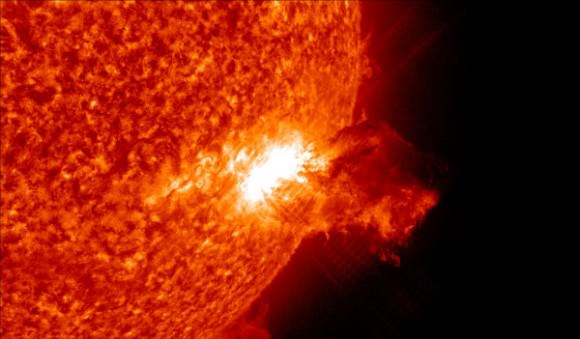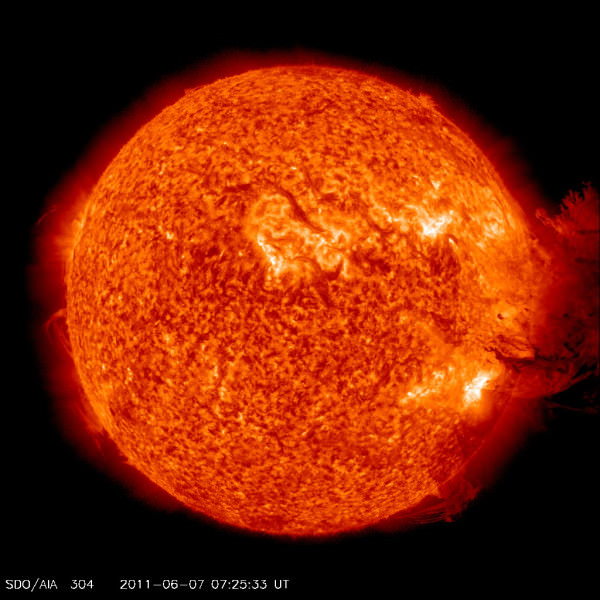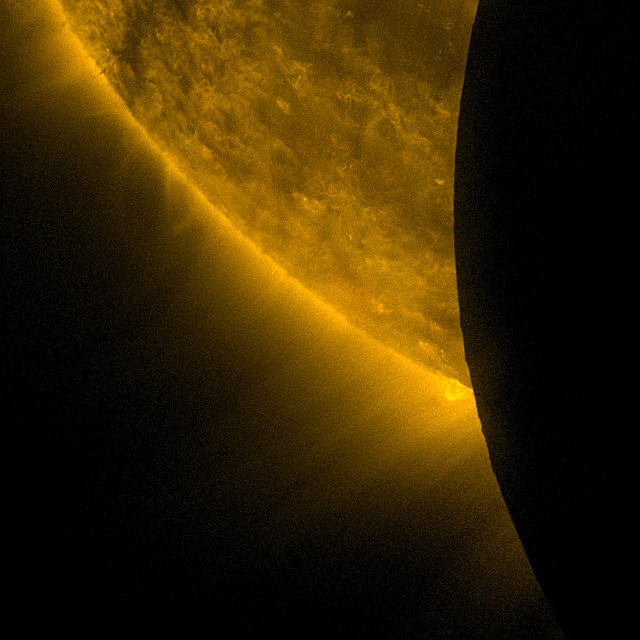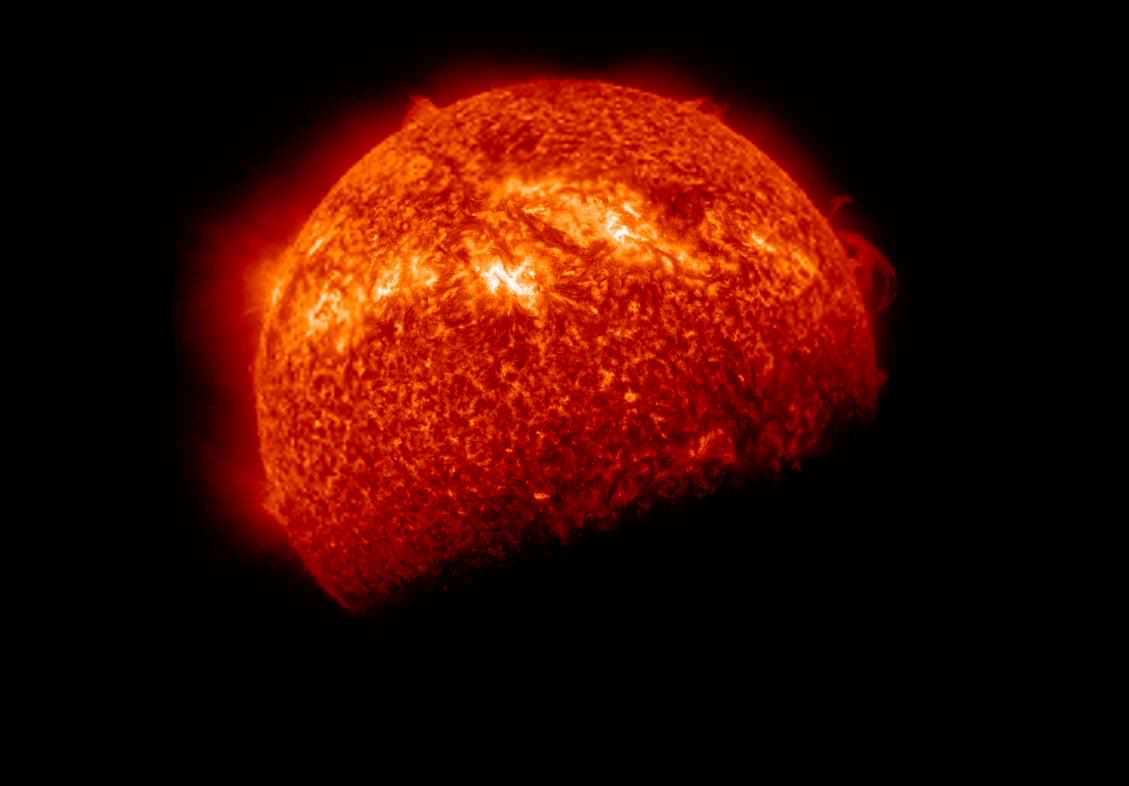Early this morning (June 7, 2011) an amazingly massive and spectacular event took place on the Sun; a huge prominence eruption, marked by a solar flare and release of energetic particles. Daniel Pendick from the Geeked on Goddard blog described it as a “fountain of plasma that blasts out of the solar surface, spreads outward, and collapses to splat back down.”
“I’ve never seen material released like this before, such a huge amount that falls back down in such a spectacular way,” says Dr. C. Alex Young in the video. “It looks like someone just kicked a giant clod of dirt into the air and it fell back down.” Young added that this event will probably not cause any problems as far as space weather affecting Earth.
This video is courtesy NASA Goddard’sHelioviewer.org with narration by folks from The Sun Today.
Below are some still images of the event from the Solar Dynamics Observatory and (just added at 1755 UTC) a video from SDO showing the event in several different wavelengths.
These images were posted by the Camilla_SDO Twitpic feed.
[/caption]

The SDO science teams says: “The Sun unleashed an M-2 (medium-sized) solar flare with a substantial coronal mass ejection (CME) on June 7 that is visually spectacular. The large cloud of particles mushroomed up and fell back down looking as if it covered an area of almost half the solar surface.”
“SDO observed the flare’s peak at 1:41 AM EST. SDO recorded these images in extreme ultraviolet light and they show a very large explosion of cool gas. It is somewhat unique because at many places in the eruption there seems to be even cooler material — at temperatures less than 80,000K.”
Update: The US National Weather Service Space Weather Prediction center has now warned that the solar flare, one of the largest to occur since December 2006, will likely lead to gemagnetic storm activity tomorrow, Wednesday.
The NWS stated: “A dramatic eruption from an otherwise unimpressive NOAA Region 1226 earlier today is expected to cause G1 (minor) to G2 (moderate) levels of geomagnetic storm activity tomorrow, June 8, beginning around 1800 UTC with the passage of a fast CME. A prompt Solar Radiation Storm reached the S1 (minor) level soon after the impulsive R1 (minor) Radio Blackout at 0641 UTC. The Solar Radiation Storm includes a significant contribution of high energy (>100 MeV) protons, the first such occurrence of an event of that type since December 2006.”
You can find updates from the Space Weather Prediction Center at this link.



